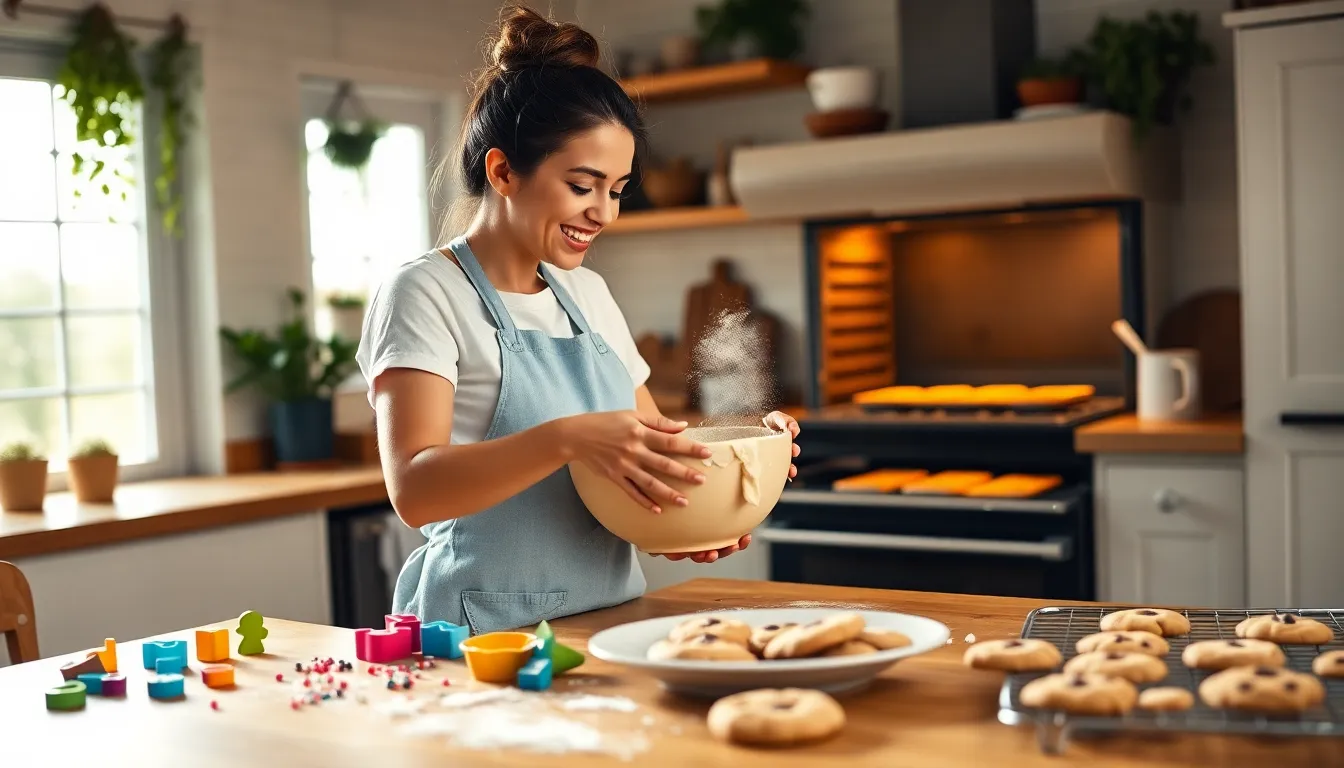In the heart of every kitchen, cookies have a special place. They are not just desserts: they are a source of joy, bringing people together and evoking sweet memories. Whether it’s a rainy afternoon or a festive gathering, baking cookies can transform the atmosphere, filling it with warmth, love, and, most importantly, delicious aromas. In this text, we will explore the art of baking cookies, from essential ingredients to creative flavor combinations and presentation tips. Let’s jump into the delightful world of cookies.
Table of Contents
ToggleThe Joy of Baking Cookies

Why Cookies?
Cookies are universally loved, and for good reason. They are versatile: whether one craves something chewy, crunchy, or soft, there’s a cookie for everyone. Baking cookies also serves as a delightful way to bond with family and friends. It’s an activity that encourages creativity and experimentation while providing a sense of accomplishment once the warm, aromatic treats come out of the oven.
A Brief History of Cookies
The cookie’s origins trace back to the 7th century AD, with early recipes believed to have emerged from Persia, where sugar was first cultivated. As culinary techniques and ingredients evolved, cookies spread throughout Europe. The name ‘cookie’ itself comes from the Dutch word ‘koekje,’ meaning small cake. Over the centuries, cookies transformed into countless varieties and became a staple in American culture, especially during the holiday season.
Essential Ingredients for Perfect Cookies
Basic Ingredients Explained
Baking cookies requires a few essential ingredients: flour, sugar, eggs, butter, and baking soda. Each component plays a crucial role in achieving the perfect texture and flavor of cookies. For instance, flour provides the structure, while sugar adds sweetness and moisture. Eggs contribute richness and act as a binding agent, and butter gives cookies their beloved flavor and chewy texture.
Choosing Quality Ingredients
Using high-quality ingredients can significantly elevate the taste of cookies. Opt for fresh, organic eggs, unsalted butter for control over salt levels, and real vanilla extract for a richer flavor. When it comes to flour, all-purpose flour is a great choice, but experimenting with whole wheat or almond flour can yield unique results.
Baking Techniques That Make a Difference
Mixing Methods for Different Cookies
The way ingredients are mixed can dramatically affect the final outcome. For soft, chewy cookies, the creaming method is ideal, where butter and sugar are beaten together until light and fluffy before adding eggs and dry ingredients. But, for denser cookies like biscotti, a straightforward method where ingredients are combined without special blending techniques works best.
The Role of Temperature in Baking
Temperature plays an essential role in baking cookies. Room temperature ingredients incorporate better and ensure even baking. Also, the oven temperature can determine the final texture. A hotter oven can lead to crispy edges and soft centers, while a cooler temperature promotes a uniform, more cake-like cookie.
Creative Flavor Combinations to Try
Classic Cookie Recipes to Get You Started
Classic recipes are always a great place to start. Chocolate chip cookies remain a timeless favorite, but oatmeal raisin cookies offer a chewy texture and wholesomeness too. Peanut butter cookies, with their rich, nutty flavor, are another beloved option for those who enjoy a bit of variety.
Innovative Variations for the Adventurous Baker
For those ready to experiment, mixing flavors can lead to delightful discoveries. Try combining lavender with lemon for a refreshing twist, or add spices like cardamom and cinnamon to elevate your traditional recipes. Vegan and gluten-free options are also increasingly popular, allowing bakers to cater to different dietary needs without sacrificing taste.
Tips for Decorating and Presenting Your Cookies
Simple Decoration Ideas
Decorating cookies can turn the simplest recipes into works of art. Icings made from powdered sugar and milk allow for easy, colorful designs, while sprinkles add a festive touch. Simple techniques like piping frosting or using edible glitter can really make cookies stand out.
Packaging for Gifting
When it comes to gifting cookies, presentation is key. Using decorative boxes or tins lined with colorful paper can enhance the gift experience. Adding handwritten labels or tags adds a personal touch that will be cherished by the recipient.
Conclusion
Baking cookies is more than just a culinary task: it’s an expression of creativity and a way to connect with others. From classic recipes to innovative flavor combinations, each cookie baked provides an opportunity to share love and joy. With these tips on ingredients, techniques, and presentation, any baker can create delightful cookies that will be enjoyed by family and friends alike. So, roll up your sleeves, preheat that oven, and let the baking begin.


